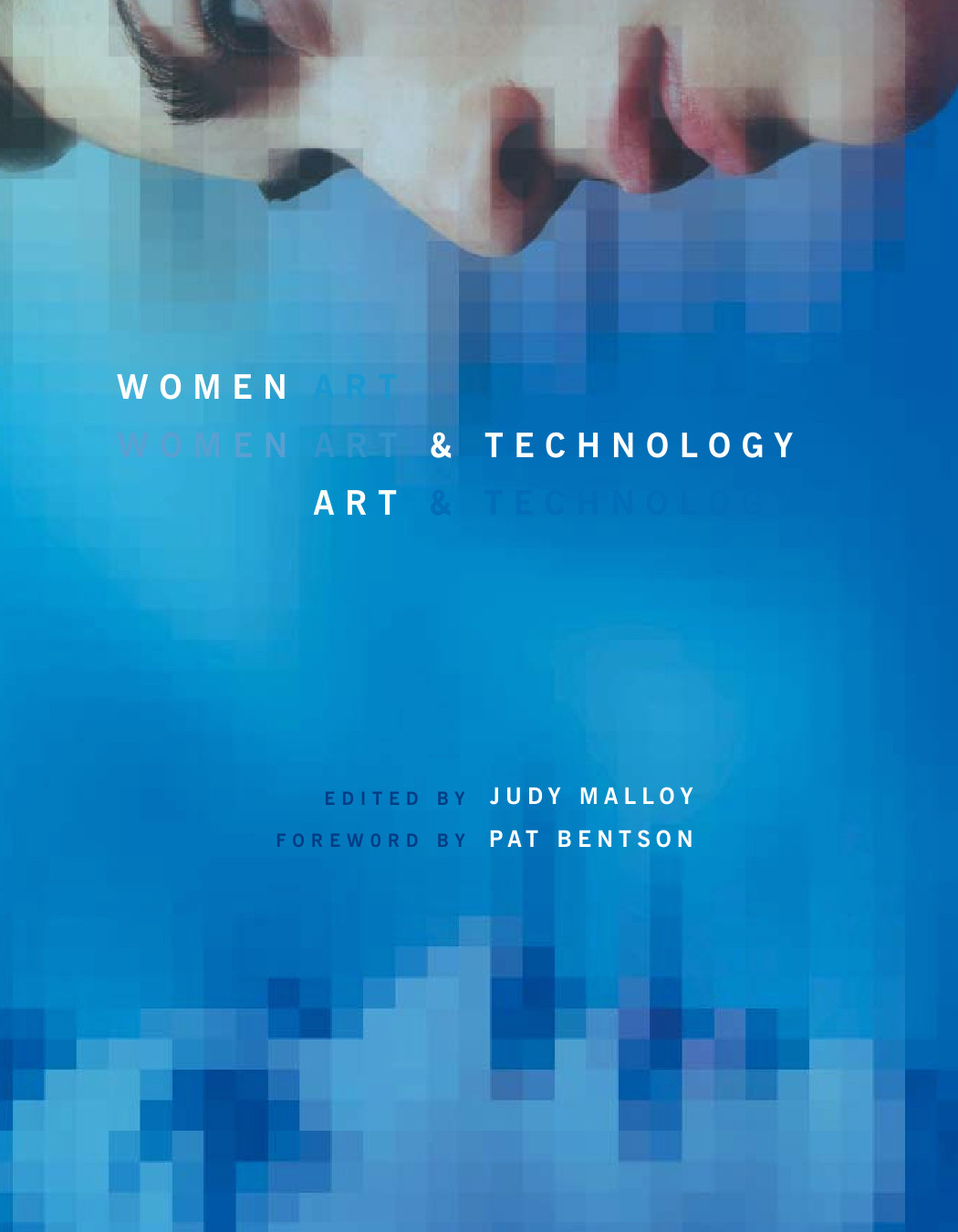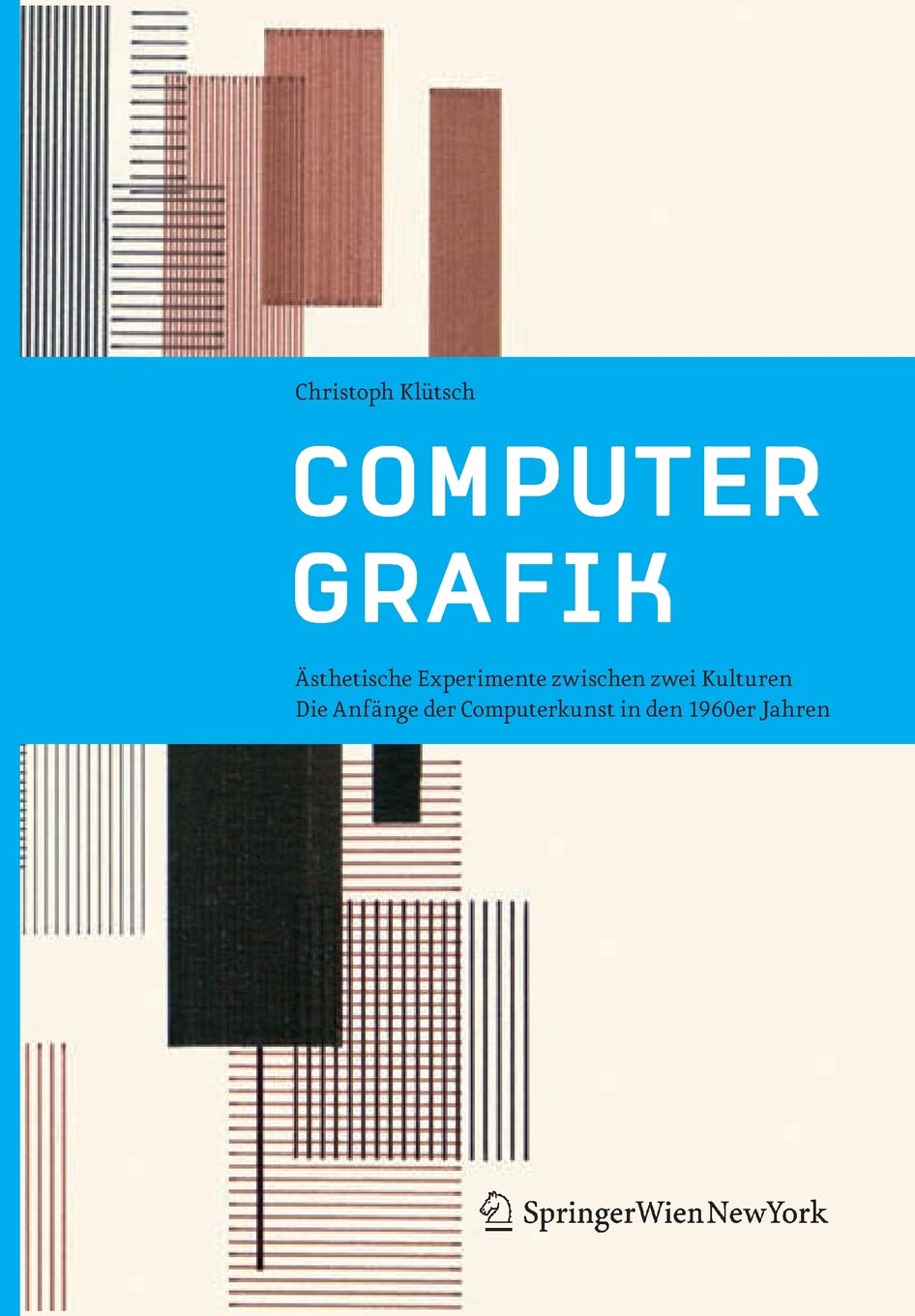Judy Malloy (ed.): Women, Art, and Technology (2003)
Filed under book | Tags: · collaborative art, computer graphics, electronic art, gender, installation art, interactivity, mass media, media, media art, net art, performance, performance art, technology, video art, women

“Although women have been at the forefront of art and technology creation, no source has adequately documented their core contributions to the field. Women, Art, and Technology, which originated in a Leonardo journal project of the same name, is a compendium of the work of women artists who have played a central role in the development of new media practice. The book includes overviews of the history and foundations of the field by, among others, artists Sheila Pinkel and Kathy Brew; classic papers by women working in art and technology; papers written expressly for this book by women whose work is currently shaping and reshaping the field; and a series of critical essays that look to the future.
Artist contributors include computer graphics artists Rebecca Allen and Donna Cox; video artists Dara Birnbaum, Joan Jonas, Valerie Soe, and Steina Vasulka; composers Cecile Le Prado, Pauline Oliveros, and Pamela Z; interactive artists Jennifer Hall and Blyth Hazen, Agnes Hegedus, Lynn Hershman, and Sonya Rapoport; virtual reality artists Char Davies and Brenda Laurel; net artists Anna Couey, Monika Fleischmann and Wolfgang Strauss, Nancy Paterson, and Sandy Stone; and choreographer Dawn Stoppiello. Critics include Margaret Morse, Jaishree Odin, Patric Prince, and Zoe Sofia.”
Foreword by Pat Bentson
Publisher MIT Press, 2003
ISBN 0262134241, 9780262134248
541 pages
PDF (6 MB, updated on 2020-4-23)
Comment (0)Cybernetic Serendipidity: The Computer and the Arts (1968)
Filed under catalogue | Tags: · art, computer art, computer film, computer graphics, cybernetics, electronic art, media art

Cybernetic Serendipity was an exhibition of cybernetic art curated by Jasia Reichardt and shown at the Institute of Contemporary Arts, London, from 2 August to 20 October 1968. Later it moved to the Corcoran Gallery of Art in Washington D.C., running there from 16 July to 31 August 1969; and finally to the recently founded Exploratorium in San Francisco, where it ran from 1 November to 18 December 1969.
The show featured a comprehensive assortment of pioneer techno-artists including Edward Ihnatowicz, Liliane Lijn, Gustav Metzger, Nam June Paik, Nicolas Schöffer, and Jean Tinguely, and as represented by a number of their more noteworthy pieces including Paik’s Robot K-456 (1964), Schöffer’s CYSP-1 (1956); and Tinguely’s Méta-Matic (1961). It also included works by engineers, mathematicians, composers and poets. Reichardt also went on to serve as the editor of a book, Cybernetics, Art and Ideas (1971), extending this study of the relationship between cybernetics and arts.
Special Issue of Studio International
Edited by Jasia Reichardt
Publisher Studio International, London, 1968
1st edition July 1968
2nd edition (revised) September 1968
Book edition, Praeger, New York, 1969
Reprint of book edition, Studio International Foundation, London, 2018
101 pages
PDF (2nd ed., b&w, 8 MB, updated to OCR on 2015-12-17)
PDF (2018 repr. of 1969 ed., color, 253 MB, added on 2018-10-26, via)
Flipbook (2018 repr. of 1969 ed., added on 2018-10-26)
Christoph Klütsch: Computergrafik: Ästhetische Experimente zwischen zwei Kulturen. Die Anfänge der Computerkunst in den 1960er Jahren (2007) [German]
Filed under book | Tags: · aesthetics, art, computer art, computer graphics, cybernetics, information aesthetics

“Computergrafik ist ein innovativer Beitrag zur ungeschriebenen Geschichte der Computergrafik der 60er Jahre. Vor dem Hintergrund C. P. Snows “zwei Kulturen” Diskussion entwickelte sich in der Stuttgarter Schule um Max Bense eine neue Form generativer bzw. algorithmischer Kunst, die die Anfänge der digitalen Computergrafik markieren. Zentrale theoretische und künstlerische Konzepte werden anhand der Werke von Frieder Nake, Georg Nees, A. Michael Noll und Manfred Mohr diskutiert. Pionierleistungen, theoretische Diskussionen und die Bezüge zu zeitgenössischen Kunstbewegungen sind systematisch aufgearbeitet und ermöglichen die Einordnung einer ästhetischen Debatte, wie sie bisher weder im Kontext einer neuen Informationsästhetik noch in der Kunstgeschichte oder in medienwissenschaftlichen Untersuchungen geleistet worden ist. Interviews mit Pionieren der Computergrafik in Deutschland und den USA, die Aufarbeitung schwer zugänglichen Quellenmaterials und eine umfangreiche Bibliographie runden das Werk ab.”
Publisher Springer, 2007
ISBN 3211394095, 9783211394090
288 pages
Key terms: Computerkunst, Frieder Nake, Max Bense, Manfred Mohr, Computergrafik, Informationsästhetik, Bell Labs, Zagreb, Serendipity, Op-Art, C. P. Snow, Informationstheorie, Konkrete Kunst, Semiotik, Kybernetik, Helmar Frank, Computerkünstler, Bridget Riley, Turing test
Review: Mihai Nadin (Image, 2007).
PDF (updated on 2020-11-20)
Academia.edu (from author, added on 2020-11-20)

